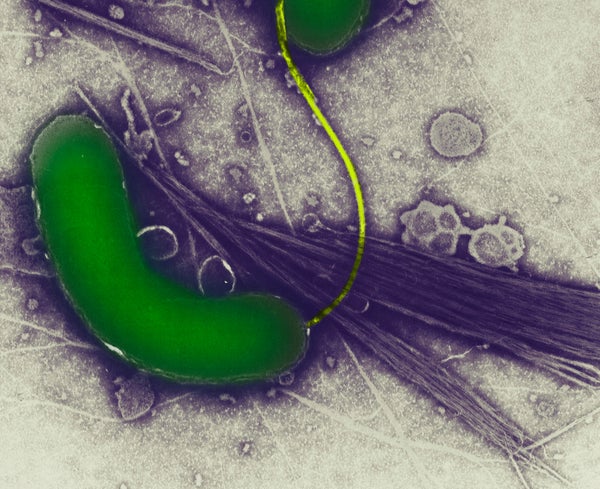This article was published in Scientific American’s former blog network and reflects the views of the author, not necessarily those of Scientific American
With the climate continuing to change and with the widespread availability of global travel, more pathogenic microorganisms are emerging every day, and they are spreading fast. Even now, we are in the midst of several major microbial outbreaks—the continuing spread of antimicrobial resistance, the reemergence of Ebola and the persistence of Zika, just to name a few. Battling these bugs is further complicated by the dwindling supply of effective antimicrobial treatments and the limited availability of vaccine options, so every second spent on developing new diagnostic tools and therapeutics matters.
Unfortunately, developing effective, safe tools and treatment options is a lot easier said than done. One of the major barriers to progress in these areas is the inability of scientists to fulfill one of the most fundamental tenets of scientific research: reproducing and verifying the work of others. In a 2016 Nature survey, for example, over 70 percent of the biologists surveyed reported that they were unable to reproduce the findings of others, and 60 percent could not reproduce their own findings. This, in turn, restrains scientific progress and wastes significant amounts of time and funding: an estimated $28 billion per year in the United States alone.
Scientific progress depends on the reproducibility of published discoveries; it is what helps establish new areas of investigation and translate insightful findings into life-saving therapies and tools. By not being able to accurately and confidently compare and correlate data between different bodies of work, scientists cannot expand upon previous research—and for patients, for whom every second counts, it can delay receiving the diagnosis or treatment they need to survive.
On supporting science journalism
If you're enjoying this article, consider supporting our award-winning journalism by subscribing. By purchasing a subscription you are helping to ensure the future of impactful stories about the discoveries and ideas shaping our world today.
While there is not a single cause for the lack of reproducibility, it fundamentally stems from the lack of a good foundation when developing an experiment. It’s like building a house: without a strong foundation, the structure that sits on it will be shaky. The same is true in life-science research: when it’s is built upon a weak foundation, data integrity is compromised.
One of the primary factors that can affect the strength and reproducibility of scientific research is the use of biological materials that are not fully characterized, or that can’t be traced back to their original source. This means that scientists may be using a different microorganism than they think, or a strain has evolved since it was originally isolated. Using these strains throughout a research project results in incorrect conclusions and irrelevant data:“garbage in, garbage out” as computer programmers would say. Clearly researchers can’t make important breakthroughs in science if they are starting with the wrong materials.
In many cases, the problem occurs because researchers simply don’t know that authentication is a problem, either because they are new to the field or because they have been using the same biological material for years without any noticeable setbacks. Unfortunately, this lack of awareness can have serious consequences. Because microorganisms replicate rapidly, many species can evolve quickly in response to environmental selection pressure. This can easily occur as a result of improper handling, growing the microorganism for too long or not storing the strain at the correct temperature. What you end up with is a microbial strain that behaves differently than expected, or that may have new characteristics that the researcher is unaware of.
Another issue is the use of strains that have been authenticated via outdated techniques. What started out as simple techniques to characterize microbes based on morphology, size and motility has since evolved to a polyphasic approach that evaluates the physical, genomic, and functional characteristics of a strain. While this has led to more credibility for recently isolated strains, older strains that were verified using less modern approaches may not be as accurately classified.
These are the reasons why accredited organizations that specialize in biomaterials management are so essential to the scientific community. The nonprofit American Type Culture Collection (ATCC), for example, for which I work, is a biological materials resource and standards organization with nearly a century’s worth of experience and expertise in handling, maintaining, storing and globally distributing cell lines and microorganisms. Our organization and others like it provide the research community with standardized, traceable and fully authenticated biological materials that are maintained in a way that promotes reproducibility across time and among laboratories.
By acquiring biological starting materials from this type of organization, scientists can rest assured that they are using credible materials in their research; that their data are reliable; and that the diagnostics and therapeutics they develop target the right microorganisms.
With new microbial pathogens emerging at an alarming rate, it is now more important than ever that clinicians have access to the diagnostic tools and therapeutics needed to cope with each new threat. Now is the time for scientists to work together and be proactive about starting their research with a strong foundation built upon authenticated and traceable reference materials. At the end of the day, it is the lives of others on the line.
